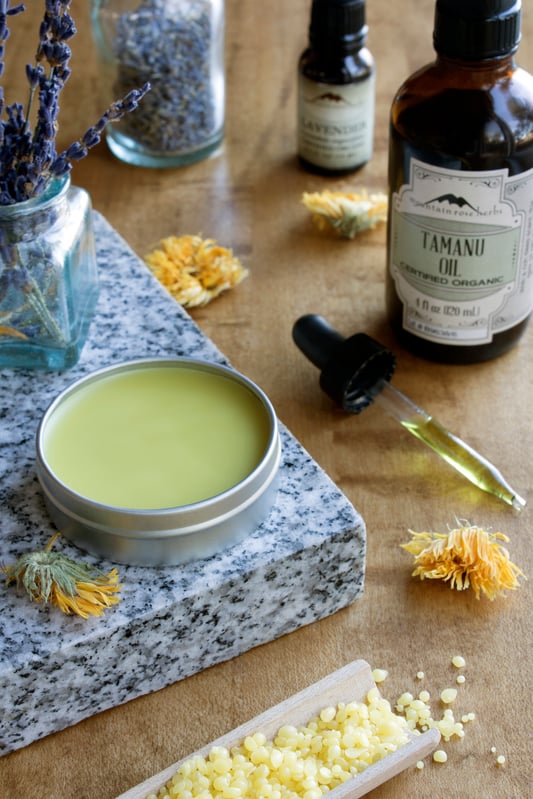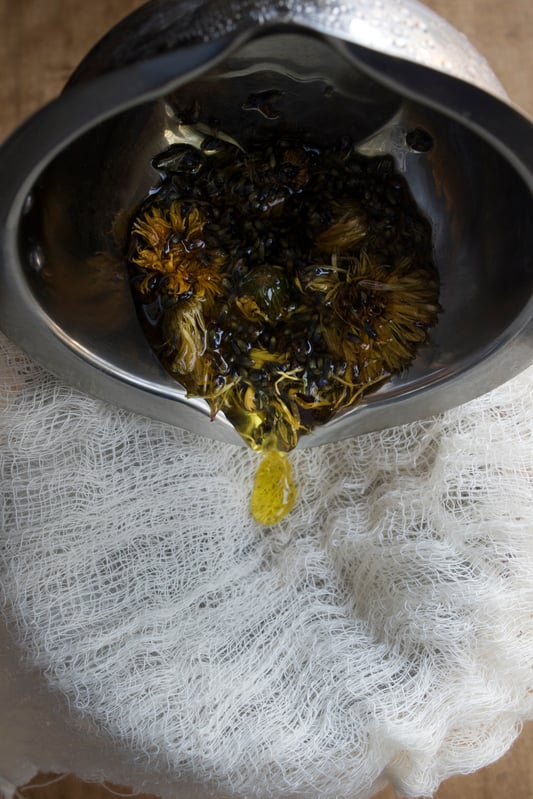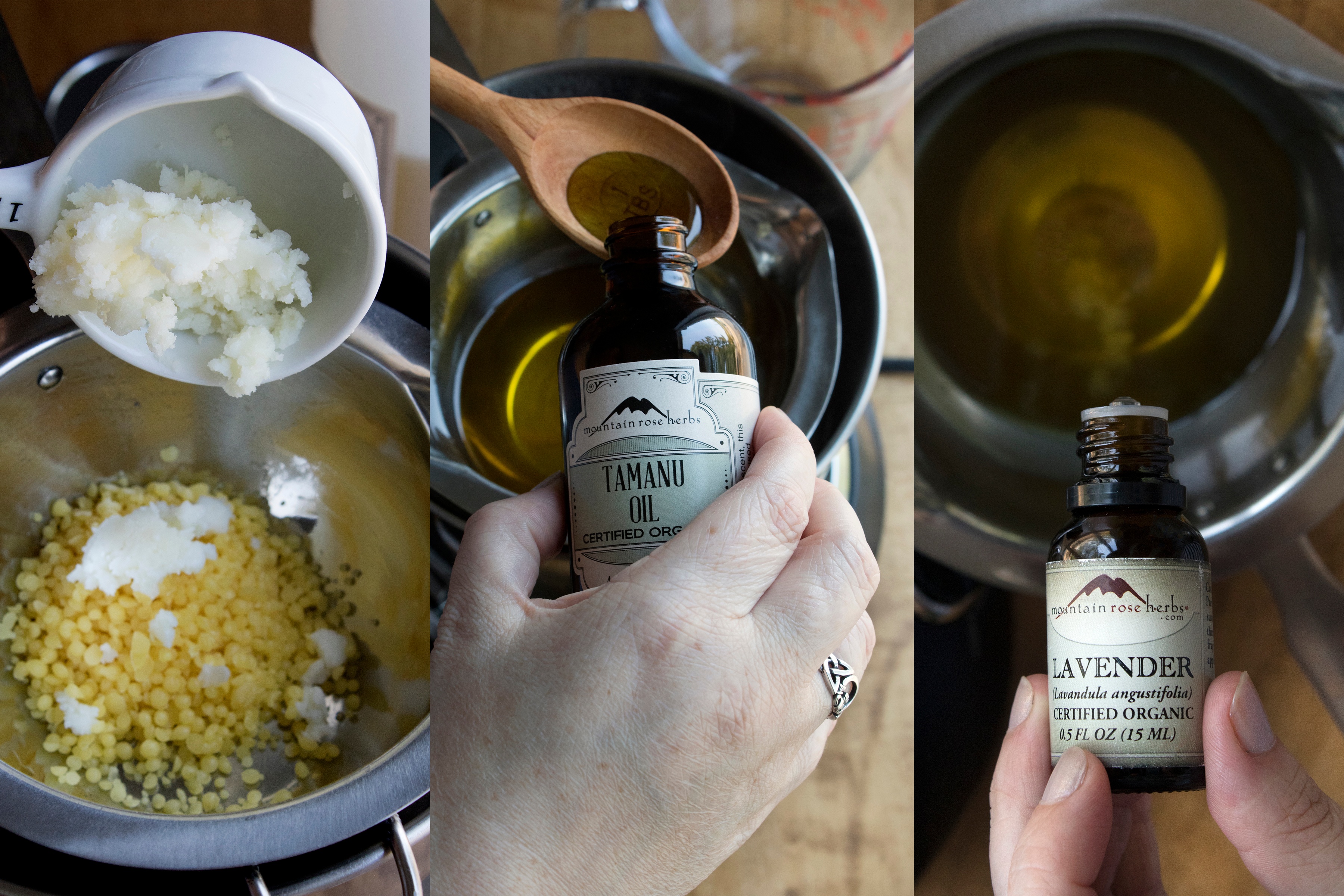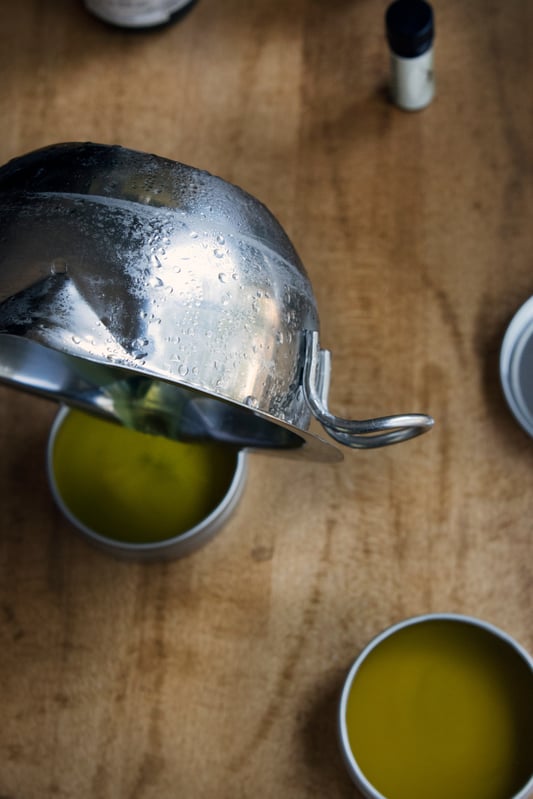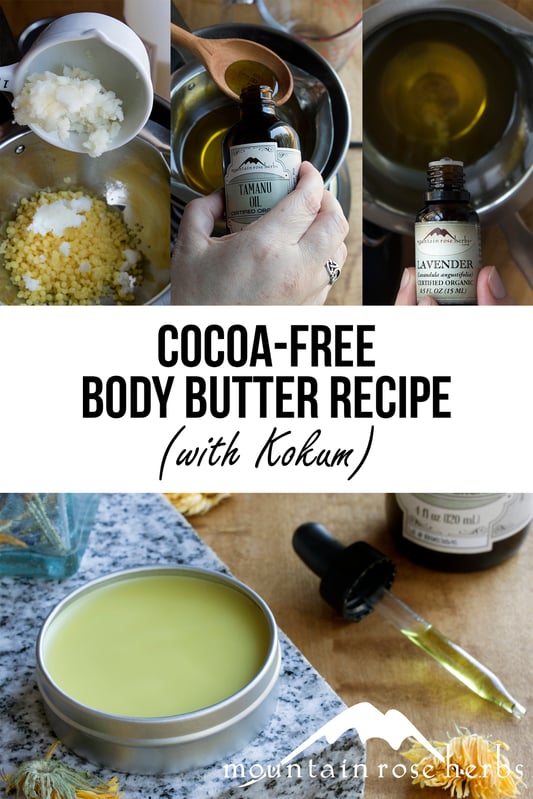My recent discovery of kokum butter set me ablaze in the kitchen! Happily experimenting with various ways to use it, I’ve concluded that it is perfect for dry skin.
If you’ve never used kokum butter, it’s similar in firmness to cocoa butter, but a little flakier. Many consider it a good substitute for cocoa butter because of its uniform triglyceride composition. It can be used to thicken many homemade cosmetics including body butters, creams, lotions, and lip balms.
Kokum butter has a mild scent (it doesn’t smell like much at all), which is helpful when highlighting a particular aroma in your homemade creations (such as an essential oil or herb). This is where kokum butter comes in handy as a replacement for cocoa butter, since cocoa butter tends to overpower other scents.Of all the products I’ve made with kokum butter, my absolute favorite is herbal-infused dry skin salve. It soothes dry patches around the elbows and knees, makes a great moisturizer for hard-working hands, and is perfect for massaging tired feet.
I’m excited to share the recipe with you today! This DIY salve recipe utilizes the deep moisturizing properties of kokum butter and pairs them with organic plant oils suitable for dry skin.
The first step in making this salve is creating an herb-infused oil with organic calendula and organic lavender flowers. If you’re in a hurry, the infusion can be omitted (see the Pro Tips for how to process in this case).
Tamanu oil is an important part of this recipe, but it has a strong herbaceous aroma (which I personally enjoy!). If you'd prefer a milder fragrance, use organic plantain herbal oil instead.
Lastly, organic helichrysum and organic lavender essential oils are added to help soothe the skin. This salve is wonderful without the essential oils, but including them gives the salve a bit more oomph. Feel free to substitute with your favorite skin-safe organic essential oils, but be sure to create a dilution of no more than 2% essential oil-to-carrier and avoid using phototoxic essential oils. Check out our guide to essential oil dilutions and conversions to learn more.
Herb-Infused Kokum Body Butter with Essential Oils
Yields 4 ounces.
Ingredients
- 1 Tbsp. organic dried calendula flowers
- 1/2 Tbsp. organic dried lavender flowers
- 3 Tbsp. organic extra virgin olive oil
Salve
- 1/8 cup kokum butter
- 1/8 cup plus 1 tsp. beeswax pastilles
- 3 Tbsp. homemade herb-infused oil or organic calendula herbal oil
- 1 Tbsp. organic unrefined coconut oil
- 1 Tbsp. organic tamanu oil or organic plantain herbal oil
- 25 drops organic lavender essential oil
- 4 drops organic helichrysum essential oil
- Tins or jars
- Cheesecloth
- Funnel
- Double boiler
Directions
- Place calendula and lavender flowers and olive oil in a double boiler. Warm over very low heat for at least one hour. Check out this handy guide to herbal-infused oils for detailed infusion directions.
- Remove from heat and allow to cool.
- Strain through funnel lined with cheesecloth into a bowl or large glass measuring cup. Set aside.
- Place kokum butter, coconut oil, and beeswax in double boiler. Heat gently until melted.
- Add tamanu oil (or plantain herbal oil) and herb-infused oil (or calendula herbal oil). Stir to combine.
- Remove from heat. Allow to cool for 2 minutes.
- Add essential oils. Stir to distribute evenly.
- Quickly pour into containers.
- Let salve cool completely before closing lid.
- Be sure to add a label!
- Store salve in cool dark place.
Pro Tips:
- If skipping the infusion, begin by melting kokum butter, beeswax, and coconut oil in double boiler. Next, add olive oil (or pre-made calendula herbal oil) and tamanu oil (or plantain herbal oil). Stir to combine. Proceed with steps 5 through 9 above.
- This salve can be used year-round. It’s great for dry skin that appears in winter and wonderful for occasional skin irritations that accompany gardening and other spring/summer activities.
If stored in a cool, dark place, this salve will keep for 12 months. I hope you enjoy this salve as much as I do! For more DIY tutorials check out my site nofussnatural.com.
Would like to try your hand at whipped body butter?
Try this DIY Whipped Body Butter Recipe
You may also be interested in:

